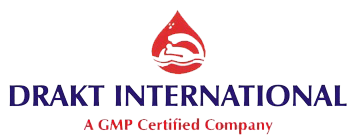In pharmaceutical manufacturing, ensuring the accuracy and reliability of measuring instruments is paramount. Calibration, a critical process for maintaining measurement accuracy, ensures compliance with regulatory requirements and guarantees product quality. This article delves deeply into the importance of calibration, frequency determination, and best practices for maintaining optimal instrument performance in pharmaceutical settings.
Understanding Calibration in Pharmaceutical Units
Calibration involves comparing the measurements of an instrument against a standard with known accuracy. This ensures that the instrument’s output aligns with regulatory and operational standards. In pharmaceutical manufacturing, this process is vital for:
- Ensuring the accuracy of quality control processes.
- Maintaining compliance with Good Manufacturing Practices (GMP).
- Avoiding product recalls due to quality deviations.
- Ensuring safety and efficacy of pharmaceutical products.
Factors Influencing Calibration Frequency
The calibration frequency for instruments depends on multiple factors:
1. Instrument Type and Function
- Critical Instruments: Devices directly affecting product quality (e.g., spectrophotometers, balances) require more frequent calibration.
- Non-Critical Instruments: Tools with minimal impact on quality may be calibrated less frequently.
2. Manufacturer Recommendations
Equipment manufacturers provide guidelines for calibration based on the design and purpose of the instrument. Following these recommendations ensures optimal performance.
3. Usage Intensity
Instruments used extensively or in demanding conditions (e.g., high temperature, corrosive environments) often need more frequent calibration.
4. Historical Performance
Tracking calibration history helps determine patterns of drift, informing the ideal calibration schedule.
5. Regulatory Standards
Compliance with international standards like ISO 9001, ISO 17025, and GMP often dictates specific calibration intervals.
6. Environmental Conditions
Factors such as temperature, humidity, and vibration can affect instrument accuracy, necessitating adjustments in calibration frequency.
Recommended Calibration Frequencies for Common Instruments
| Instrument Type | Recommended Frequency | Criticality Level |
|---|---|---|
| Balances | Daily checks; Annual calibration | High |
| pH Meters | Weekly calibration; Monthly checks | High |
| Spectrophotometers | Quarterly calibration | High |
| Pressure Gauges | Biannual calibration | Medium |
| Temperature Sensors | Quarterly to annual calibration | High |
| Pipettes | Every six months | High |
| Timers and Clocks | Annually | Medium |
Note: These intervals should be adapted based on specific operational and environmental conditions.
Steps for Effective Calibration Management
1. Develop a Calibration Plan
Outline all instruments, their criticality, and corresponding calibration intervals.
2. Maintain Traceability
Ensure calibration standards are traceable to recognized national or international measurement bodies.
3. Use Certified Professionals
Only certified personnel or external agencies should perform calibrations.
4. Automate Records
Employ calibration management software to log data, track schedules, and generate compliance reports.
5. Monitor Calibration Drift
Regularly review calibration data to identify trends in instrument performance.
Calibration Challenges in Pharmaceutical Manufacturing
- Resource Allocation: Ensuring availability of skilled professionals and calibration equipment.
- Cost Management: Balancing budget constraints with the need for frequent calibrations.
- Environmental Sensitivity: Adapting to changes in conditions such as humidity and temperature.
- Downtime Minimization: Scheduling calibrations to avoid disruption of operations.
Conclusion
Regular calibration of instruments in pharmaceutical manufacturing is non-negotiable for ensuring product quality, regulatory compliance, and operational efficiency. By understanding the factors influencing calibration frequency and adhering to best practices, manufacturers can optimize their processes and maintain the highest standards of reliability.


Add a Comment